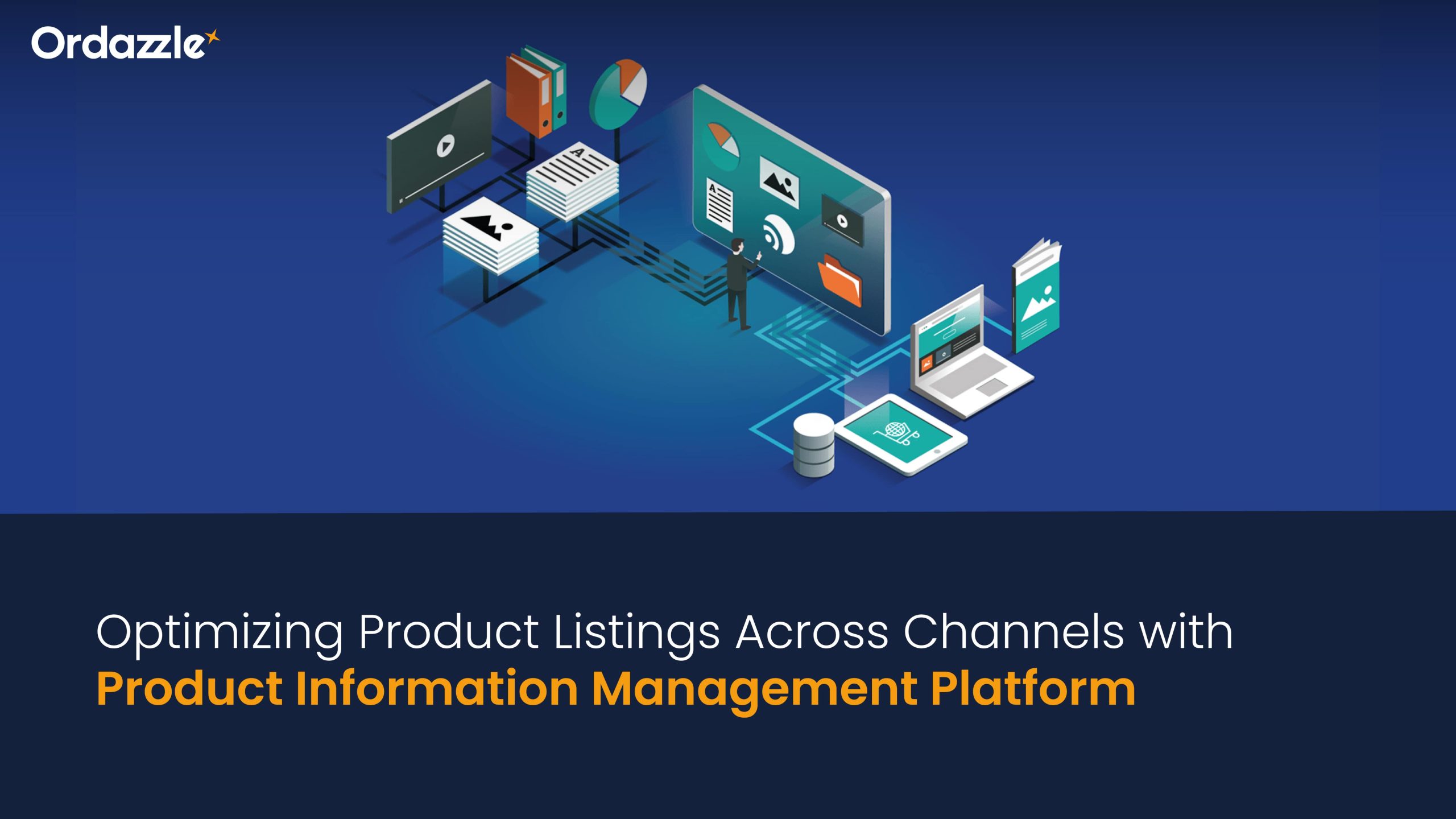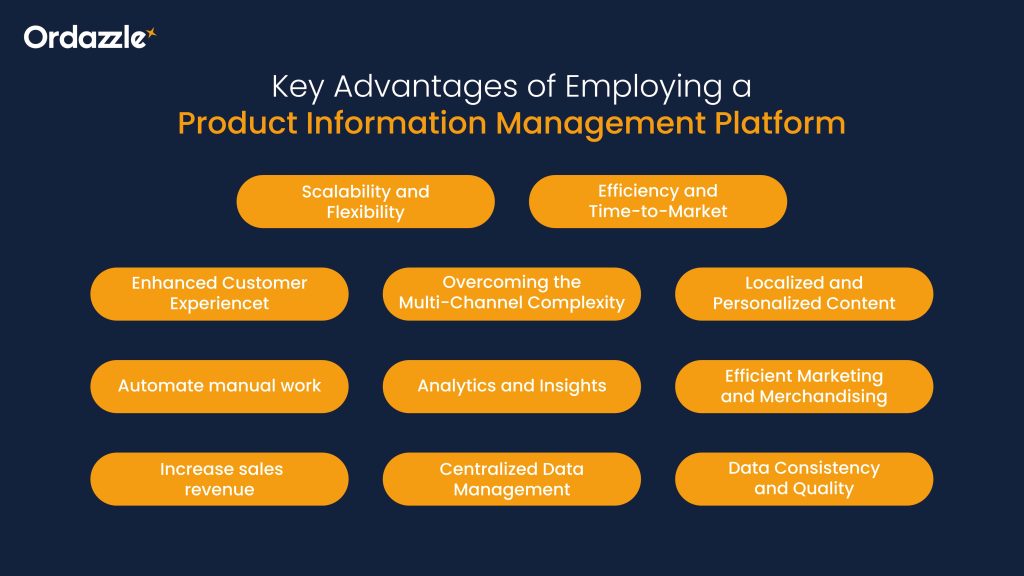
Optimizing Product Listings Across Channels with Product Information Management Platform
Today, countless products vie for attention across many channels — be it your website, social media, or third-party e-commerce sites — maintaining a consistent presence is not just beneficial; it’s essential. Modern consumers demand shopping experiences that offer uniformity; they expect each product description to be precise, informative, and consistent, no matter the platform.
This expectation presents retailers and manufacturers with a significant challenge: How do they maintain such a high level of consistency and coherence in their product narratives when faced with the vastness of the e-commerce landscape and the sheer volume of product data?
Enter product information management platform (PIM), the behind-the-scenes data maestro, ensuring your product’s story remains harmonious across all channels.
In this blog, we explore the intricacies of PIM platforms and how businesses can harness their power to create seamless product listings across multiple channels.
What is a Product Information Management (PIM) Platform?
Product Information Management is a centralized system designed to consolidate, manage, and enhance product information, streamlining its distribution to various sales and e-commerce channels. It’s a powerful product management system that serves as a single source of truth, ensuring that all stakeholders, from suppliers to customers, access the same, up-to-date information. PIM solutions effectively manage and synchronize all facets of product data—from essential specifications to rich media—establishing a single, reliable source of truth.
This harmonization is critical in avoiding the pitfalls of pre-PIM days when companies grappled with spreadsheet sprawl, manual processes, and scattered data sources. Such disarray led to inefficiencies, increased errors, and inconsistent product narratives across platforms, which could damage brand integrity, deter sales, and erode customer trust.
Seamless Listings Across Multiple Channels
Implementing PIM has revolutionized the e-commerce landscape, yielding transformative results for many businesses. The benefits are substantial, leading to faster market access for products, reduction of errors and returns, and ultimately, a more satisfied customer base and healthier bottom line.
Key Advantages of Employing a Product Information Management Platform:
 Centralized Data Management:
Centralized Data Management:
PIM is a unified repository for all product-related information, including descriptions, specs, pricing, and multimedia content. This centralization is vital, as it ensures uniformity in data across all sales channels, removing discrepancies and enabling consistent information retrieval.
Data Consistency and Quality:
PIM streamlines data normalization, making it channel-agnostic. It maintains data quality via validation checks and approval processes, fostering brand trust and diminishing returns and complaints.
Scalability and Flexibility:
With business growth, a product management system adeptly manages increasing product ranges and SKUs. They scale with your business, assimilating new product information effortlessly and maintaining accuracy even as volume grows.
Efficiency and Time-to-Market
PIM enhances operational speed, slashing the time required for product information updates and distribution, thus accelerating the introduction of new products to the market.
Enhanced Customer Experience:
Uniform and comprehensive product information aids customers in making informed decisions, fostering a superior shopping experience across all channels. PIM ensures that customers see uniform product information across all channels, whether shopping online, on a mobile app, or in a physical store.
Overcoming the Multi-Channel Complexity
Businesses often juggle sales across their websites, marketplaces like Amazon or eBay, social media, and physical storefronts, each with distinct demands. PIM allows businesses to customize physical and digital product information for each channel without the need to adjust the data for each one manually. The system has product information management software to automatically adapt and distribute product information to different channels, each with its requirements and formats. PIM also enables product marketers to make on-demand changes, launch new content quickly, and assign assets to a hierarchy of catalogs, which can be matched with campaigns.
Localized and Personalized Content
With global e-commerce, listings must be adapted not just for different channels but also for other regions and customer segments. PIM facilitates content localization for various areas and personalization for different customer segments, ensuring relevance and compliance.
Automate Manual Work
Automating data management processes with PIM reduces manual efforts and mitigates error risks, freeing up resources for strategic initiatives.
Analytics and Insights
A good PIM platform doesn’t just manage data — it also provides valuable insights. It consists of analytics product information management software tracking product performance across channels. It gives businesses a clearer picture of what works and what doesn’t, enabling them to make data-driven decisions.
Efficient Marketing and Merchandising
PIM allows for quick syndication of product information, aiding in the creation of targeted marketing campaigns and the optimization of listings for search engines.
Increase Sales Revenue
Enhanced data quality and accuracy, rich media content and detailed product information build customer trust, enhance the shopping experience, and can lead to repeat business and increased sales.
By integrating a PIM platform, businesses can navigate the complexities of multi-channel retailing with agility, ensuring that every customer interaction is informed by reliable, accurate product information, a cornerstone of e-commerce success.
Choosing the Right PIM for Seamless Listings
Choosing the right product information management platform is crucial for optimizing sales and marketing effectiveness. When selecting a PIM, consider the following steps:
Establish a Strategy:
Identify the essential data for your product listings. Your PIM should efficiently manage and disseminate this information, aligning with customer expectations, channel requirements, and your company’s internal processes.
Standardize Your Data
Choose a PIM that offers robust tools for importing, editing, and managing product data across various marketplaces, each with unique specifications. Consistent data ensures coherence across all sales channels.
Integrate with Other Systems
PIM should not exist in isolation. Instead, it must be seamlessly integrated with other vital systems, including Customer Relationship Management (CRM) systems, Enterprise Resource Planning (ERP) software, and various e-commerce platforms. This ensures immediate synchronization of product updates throughout the company’s digital network, which is crucial for a cohesive operational workflow. Such integration facilitates a synchronized business operation and can extend to PLM, inventory management, and product development systems, all vital for an e-commerce solutions company’s functionality.
Continuously Optimize
Monitor listing performance and refine your approach using customer feedback and conversion metrics. Your PIM processes should evolve with your business needs.
When selecting a PIM, evaluate both technical capabilities and implementation strategies. Remember, adopting a PIM is a strategic decision that will impact your business’s trajectory, so consider your current resources and future growth potential.
Moving Forward with PIM
In the complex concert of e-commerce, PIM is the conductor that brings it all together, creating a symphony of satisfied customers and successful sales. A robust PIM system is the backbone of creating a consistent, trustworthy, and engaging product experience across all channels, ultimately streamlining internal processes and growth.
Ordazzle is a comprehensive e-commerce solutions company that supports many e-commerce businesses with powerful PIM platforms that provide a complete solution to manage and have a seamless flow of e-commerce data across product masters, catalogs, digital media assets, and multi-channels. From enhancing efficiency to having a competitive advantage, the benefits of integrating Ordazzle’s PIM into your product management operations are profound.
Connect with our experts today to optimize your product management operations.




 Centralized Data
Centralized Data